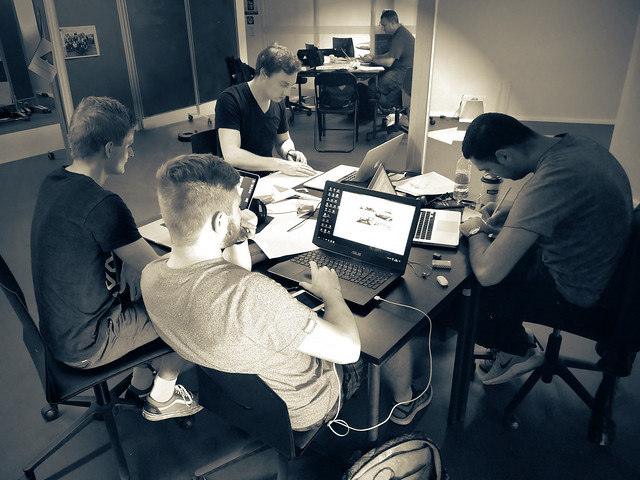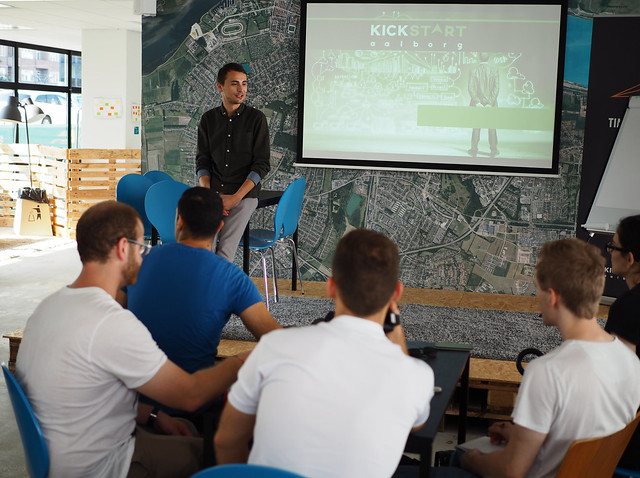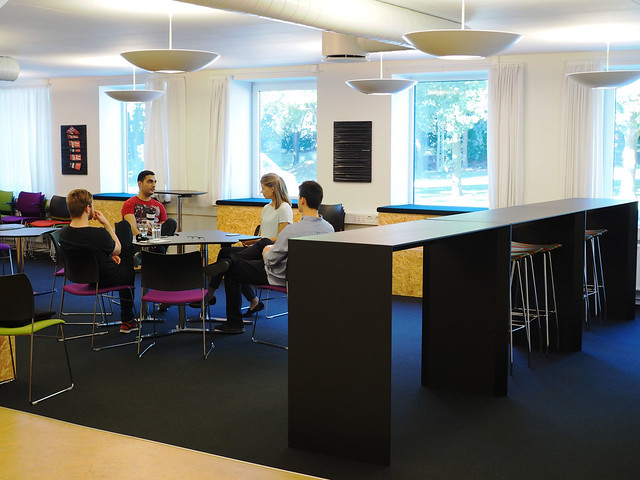Casebeskrivelse:
Tiltag og formål
Forskning har vist sig, at det er vigtigt at have entreprenør og studenrende til at koble fra.
Det handler om at medarbejdere skal have lov til at udfolde sig både fysisk og mentalt via ikke-relateretarbejde. En af disse metoder kunne være via “sjov og leg”.
Ønsket effekt
Ved at give plads til at entreprenør og studerende en mulighed for at lave sjove aktiviteter og være sociale sammen på en (måske) barnlig måde igennem leg, frigives der store mængder endorfiner,som frembringer glæde og ro i kroppen og sindet.
Fordele:
– Socialt samværd
– Bidrage til nye venskaber
– Give glæde i travle hverdage
– Hjælpemiddel til kreativitet
– Nostalgi —> barndomsminder
– Få folk til at koble helt af på ikke planlagte tidspunkter
Ulemper:
– Kan risikere manglede primært fokus på arbejde (Start-up Café alike)
– Det kan være grænseoverskridende, så folk ikke vil bruge det
THE AGENT
The Goal:
The goal with having a agent, is that he/she can help you getting your business started, meaning if you have a company or an idea, but you still don’t have any customers, then the agent can help you find 1 customer, and in that way you can start expanding your business.
Why an Agent?:
A agent is good to have, like lawyers and consultants.
Let’s say you are a web berau and you have no customers and no portfolio. What an agent can do for you is to kick-start your business, by finding a customer for you.
Sometimes you need some work done, that you can show to the customers, and gain some trust.
Strength:
Getting a network, getting a customer, can also help by showing how the market works, expert.
The Space
Goals:
– Creating a space where you can work
– Creating a space where you can network
– Have these be included in a flexible solution
Effect:
– Separation, not isolation between the companies
– The incubator can facilitate whatever needs that occur
– Should make the upstarts of companies easier
Strength:
– More contact between companies can help solve problems faster
– Flexibility
– Hopefully, this will be peoples preferred place to work
Room Arrangement
Goal:
Match the demands of companies in the incubator:
-Physical spaces supports networking and socializing
-At the same time closed space to focus on work
-All companies shall have equal possibilities to get in touch with each other
-Offer of non-offices rooms like meeting rooms, kitchen, social area
Effect:
A good room arrangement is beneficial for both the start-ups and the incubator:
-The incubator becomes an increasingly attractive alternative for start-ups
-Higher entrepreneurial success for start-ups from the AAU incubator
-Shorter throughput times due to superior concept
Strength:
Reaching the goals will lead to the following strengths:
-Start-ups have a higher productivity and fast access to knowledge
-People are more likely to enjoy staying in the incubator
-Positive perception of the incubator, from inside and from outside
Designprocess:
 Wednesday 7/09
Wednesday 7/09
The group is introduced to the different cases and initial research is initiated.
Afterwards, the group attended a meeting with the case partner, which laid the framework for the project.
Thursday 8/9
The group visited Café Start-Up in order to do field research.
Here the Daily operator, Cosmin, was interview in order to gather empiri and observation on the project.
In addition, other people from different businesses were also interviewed. These were recorded via camera and notes written by hand.

Freday 9/9
Once again the group did field research, this time in Århus in the incubator Studentervæksthuset Århus.
The method used was identical to the day before, but the group got a whole new insight of what an incubator also could be like.

Monday 12/9
The day started with a mind focused exercise which also was an experiment.
The “Sandbox” exercise was about creating an open minded environment for ideas to be created with toys which was placed.
Afterwards a discussion about what type of objects, their color, placement and orientation were debated, which gave the group a new perspekt to the whole problem.
Afterwards the time was used to create a PowerPoint presentation for the next day.

Tuesday 13/9
The group had arranged a meeting with the case partner.
During this meeting, the group presented the empiri and observations gathered during the previous field research.
The case partner then gave feedback and a discussion with the group about the material presented.
After the meeting, initial idea generation was commenced.
This was with the use of a brainstorm.
Wednesday 14/9
After an introduction to Video Sketching, we started working on our own ideas for the incubator.
We knew that we were supposed to come up with 4 to 5 ideas, and because of the freedom of this project we choose to sketch individually so that later on we talked about all the ideas.
Thursday 15/9
After having formulated the ideas for the individual concept, the group started to work on the video projects, starting with storyboarding and moving on to stop motion photography.
This process took up most of the day.
Friday 16/9
This day was mostly spent finalizing the video projects, in order to have them ready for the following Monday.
In addition, the group discussed a fifth idea, in the event that they should decide to turn that into a video sketch as well.
Monday 19/9
The day started with a meeting with the case-partner.
He was introduced to our three different concepts, where we had a discussion about them all.
After the presentation the group went back and did a final discussion about the final concept.
Tuesday 20/9
Today it was all about putting our final concept together and discuss it.
We have 4 ideas that we like to put together to 1 koncept.
So the day started with creating sequence to our final video.
We made 10 different sequence, and started to make our final video. We also discussed the logo and the name for the SEA Project.

